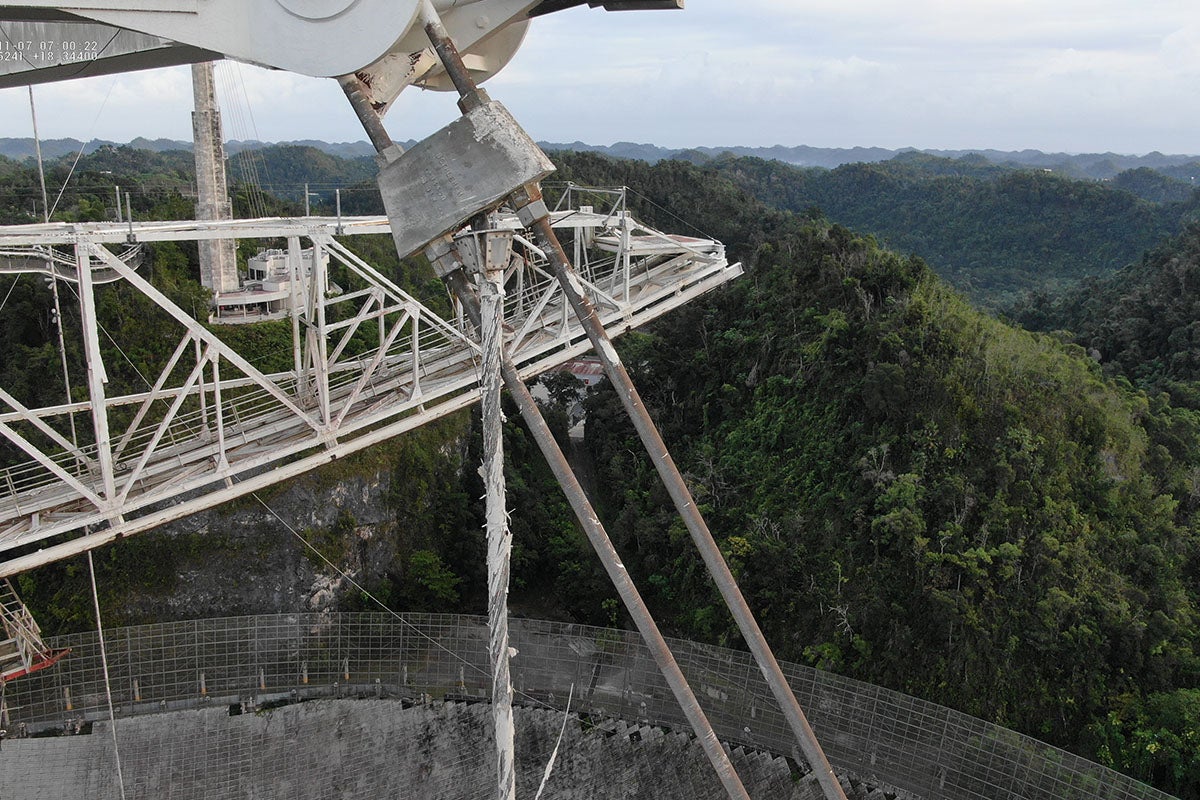The University of Central Florida today delivered engineering options to address the Arecibo Observatory to the National Science Foundation.
UCF manages the facility under a cooperative agreement with Universidad Ana G. Méndez and Yang Enterprises Inc. for NSF.
A main cable failed at AO about 7:30 pm on Nov. 6. Safety remains the team’s primary concern, so a safety zone has been set up around the reflector dish and only personnel needed to respond to the incident are allowed onsite. The AO management team began immediately working to assess the new break with the three engineering firms–Thornton Tomasetti, WSP, and WJE (Wiss, Janney, and Elstner Associates)–that were hired in connection with an auxiliary cable break that occurred Aug 10.
The goal was to determine the cause of the second break and how to stabilize the structure while minimizing risk to personnel, including those who would be making any repairs. NSF, the owner of the facility, was also notified and has been frequently briefed as assessments continued all week.
The firms have been working around the clock since Nov. 6. A monitoring team has been closely watching all the cables and platform. Drones and remote cameras are being used to minimize risk.
Preliminary analysis indicates the main cable, which failed on Nov. 6, should have easily handled the extra load based on design capacity. Engineers suspect it is likely that the second cable failed because it has degraded over time and has been carrying extra load since August. A final determination could not be made without retrieving and analyzing the second cable.
The engineering firms cannot verify the integrity of the other cables at this time supporting the 900-ton platform. Each of the structure’s remaining cables is now supporting more weight than before, increasing the likelihood of another cable failure, which would likely result in the collapse of the entire structure.
Other wire breaks on two of the remaining main cables have also been observed. The situation is dynamic and poses a serious safety risk to employees and contractors. As a result, project leaders are not only working vigorously to understand why this industrial failure occurred, but also to share these findings in a timely and transparent manner with the NSF and all interested parties.





